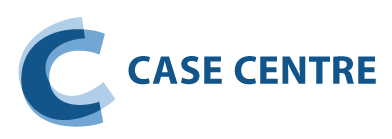


- Not connected
- |
- Login

We Gave Them a Tool, but Hardly Anyone's Using It! Untangling the Knowledge Management Dilemma at TPA
¡Les dimos una herramienta, pero casi nadie la está usando!: El dilema de la gestión del conocimiento en la TPA

- English,
- Spanish
- Business process analysis and reengineering,
- Information technologies,
- Knowledge management system,
- IT strategic alignment,
- Project management
- Análisis de procesos de negocio y reingeniería,
- Tecnologías de la información,
- Sistemas de gestión del conocimiento,
- Alineación estratégica de TI,
- Gestión de proyectos
Many organizations underestimate the challenges associated with the use of a knowledge management system (KMS). To better understand the nature of these challenges, this case describes the knowledge management efforts of a state governmental agency in the United States: Technology Project Authority (TPA). The case focuses on the three main phases of the TPA’s knowledge management strategy, between 2004 and 2008. Under pressure to improve its business processes to sustain its expertise in IT project management, TPA implemented two KMS during the period covered in the case. In the end, the second KMS was still not used as intended. Giving our teaching objectives, students are asked to determine the characteristics of an organizational environment conducive to knowledge management activities, to evaluate the strategic alignment of the KMS, and to suggest a tailored method of analysis and reengineering for an integrated system such as the KMS needed at TPA.
Numerosas organizaciones subestiman los desafíos asociados al uso de los sistemas de gestión del conocimiento (SGC). Con el fin de comprender de mejor manera la naturaleza de estos desafíos, este caso describe les esfuerzos realizados por la Agencia de Estado gubernamental de los Estados Unidos en cuanto a la gestión del conocimiento: Technology Project Authority (TPA). El caso se concentra en tres fases principales de la estrategia de la gestión del conocimiento del TPA, entre 2004 y 2008. Con la presión de mejorar los procesos de negocio para sostener su experiencia en la gestión de proyectos de TI, el TPA implementó dos SGC durante el periodo cubierto por este caso. Al final, el segundo SGC aún no había sido utilizado como se había previsto. Dado que nuestros objetivos son pedagógicos, los estudiantes deben determinar las características de un ambiente organizacional favorable para las actividades de gestión del conocimiento, evaluar la alineación estratégica del SGC, y sugerir un método de análisis y reingeniería adaptado a un sistema integrado como el SGC solicitado por el TPA.
- Utilities
Tecnologías de la información; Gestión de proyectos; Alineación estratégica
]By analyzing this case, students are given the opportunity to explore a number of situations relevant to a knowledge management strategy and to the adoption of a KMS. The primary objectives of the case discussion are as follows:
- To understand the general characteristics of knowledge management systems and of a knowledge management strategy;
- To explore the strategic alignment between organizational objectives and IT-based initiatives;
- To reflect on the organizational constraints placed on "improvement" projects and their impact on the selection of a method for analyzing the current business process and the corresponding information system;
- To reflect on how to adjust business process analysis and reengineering methods to the requirements of a specific project.
Por medio del análisis de este caso, los estudiantes tienen la oportunidad de explorar un número de situaciones en relación con la estrategia de gestión del conocimiento y la adopción de un SGC. Los principales objetivos de la discusión sobre este caso son los siguientes:
- Comprender la características generales de los sistemas de gestión del conocimiento y de una estrategia de gestión del conocimiento;
- Explorar la alineación estratégica entre objetivos organizacionales e iniciativas basadas en las tecnologías de la información;
- Reflexionar sobre las obligaciones organizacionales que se encuentran en proyectos de “mejoramiento” y de su impacto en la selección de un método para analizar los procesos de negocio en curso y su sistema de información correspondiente;
- Reflexionar sobre la manera de ajustar el análisis de los procesos de negocio y los métodos de reingeniería a los requerimientos de un proyecto específico.


